 全部商品分类
全部商品分类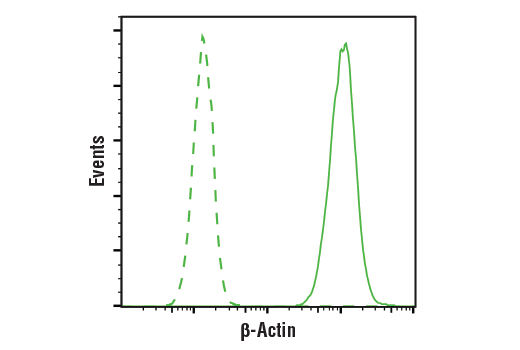



Monoclonal antibody is produced by immunizing animals with a synthetic peptide corresponding to amino-terminal residues of human β-actin.


Product Usage Information
| Application | Dilution |
|---|---|
| Western Blotting | 1:1000 |
| Simple Western™ | 1:10 - 1:50 |
| Immunohistochemistry (Paraffin) | 1:3000 - 1:12000 |
| Immunofluorescence (Immunocytochemistry) | 1:400 - 1:1600 |
| Flow Cytometry (Fixed/Permeabilized) | 1:800 - 1:3200 |





Specificity/Sensitivity
Species Reactivity:
Human, Mouse, Rat, Hamster, Monkey, Dog




Supplied in 10 mM sodium HEPES (pH 7.5), 150 mM NaCl, 100 µg/ml BSA, 50% glycerol and less than 0.02% sodium azide. Store at –20°C. Do not aliquot the antibody.


参考图片
Flow cytometric analysis of HeLa cells using β-Actin (8H10D10) Mouse mAb (solid line) compared to concentration-matched Mouse (E7Q5L) mAb IgG2b Isotype Control #53484 (dashed line). Anti-mouse IgG (H+L), F(ab')2 Fragment (Alexa Fluor® 488 Conjugate) #4408 was used as a secondary antibody.
Western blot analysis of extracts from various cell types using β-Actin (8H10D10) Mouse mAb.
Western blot analysis of recombinant Actin isoforms using β-Actin (8H10D10) Mouse mAb (upper) and Pan-Actin Antibody #4968 (lower).
Simple Western™ analysis of lysates (0.1 mg/mL) from Hela cells using β-Actin (8H10D10) Mouse mAb #3700. The virtual lane view (left) shows a single target band (as indicated) at 1:10 and 1:50 dilutions of primary antibody. The corresponding electropherogram view (right) plots chemiluminescence by molecular weight along the capillary at 1:10 (blue line) and 1:50 (green line) dilutions of primary antibody. This experiment was performed under reducing conditions on the Jess™ Simple Western instrument from ProteinSimple, a BioTechne brand, using the 12-230 kDa separation module.
Immunohistochemical analysis of paraffin-embedded human breast carcinoma using β-Actin (8H10D10) Mouse mAb.
Immunohistochemical analysis of paraffin-embedded human heart using β-Actin (8H10D10) Mouse mAb. Note the lack of staining of cardiac muscle.
Confocal immunofluorescent analysis of NIH/3T3 cells using β-Actin (8H10D10) Mouse mAb (red) and PDI (C81H6) Rabbit mAb #3501 (green). Blue pseudocolor = DRAQ5® #4084 (fluorescent DNA dye).



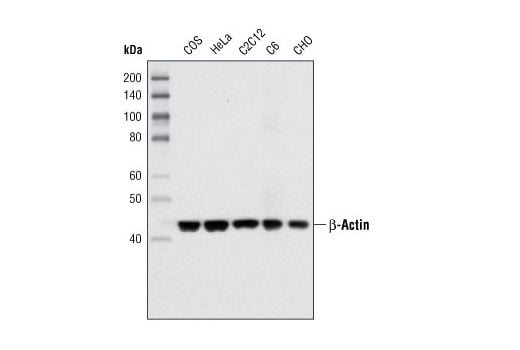
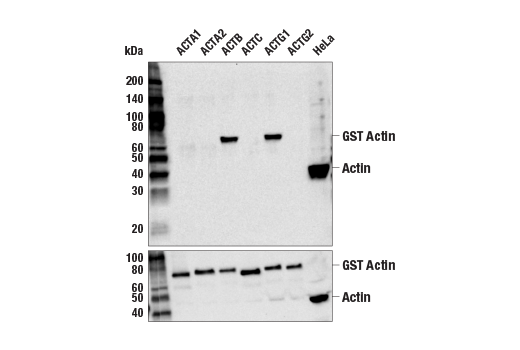
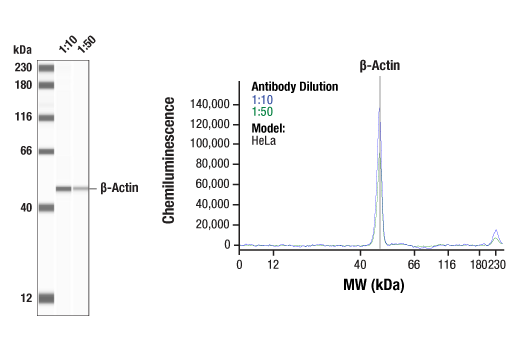

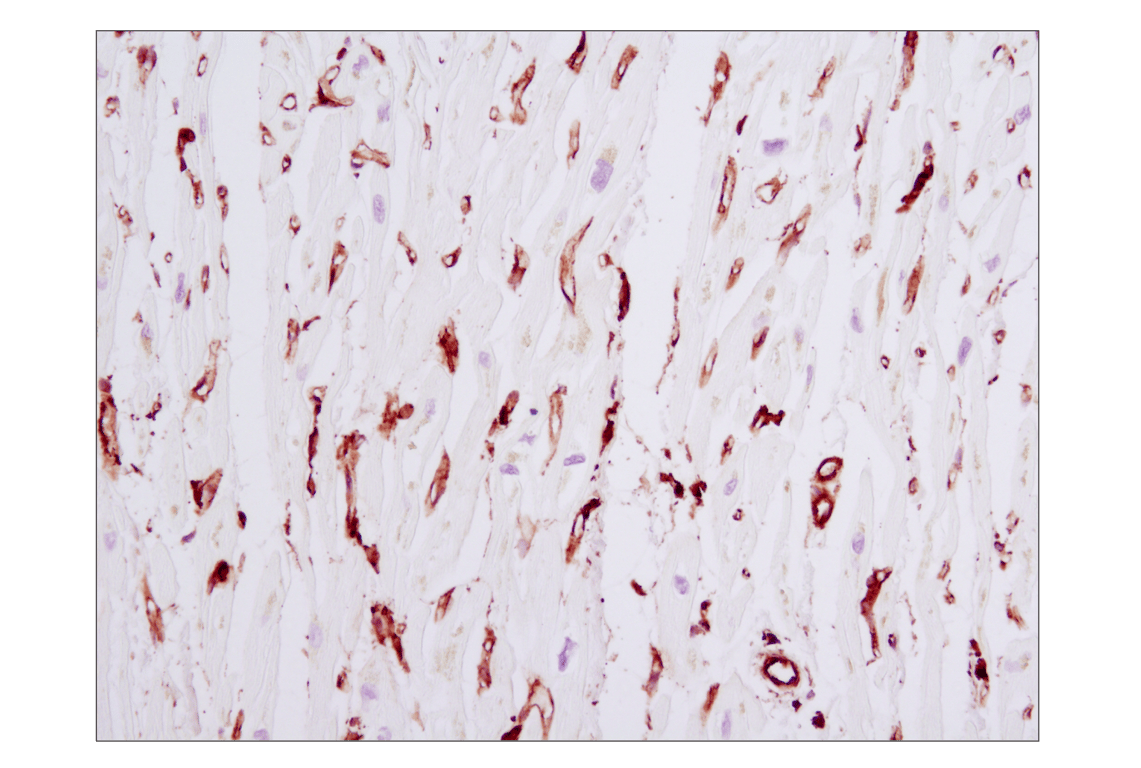
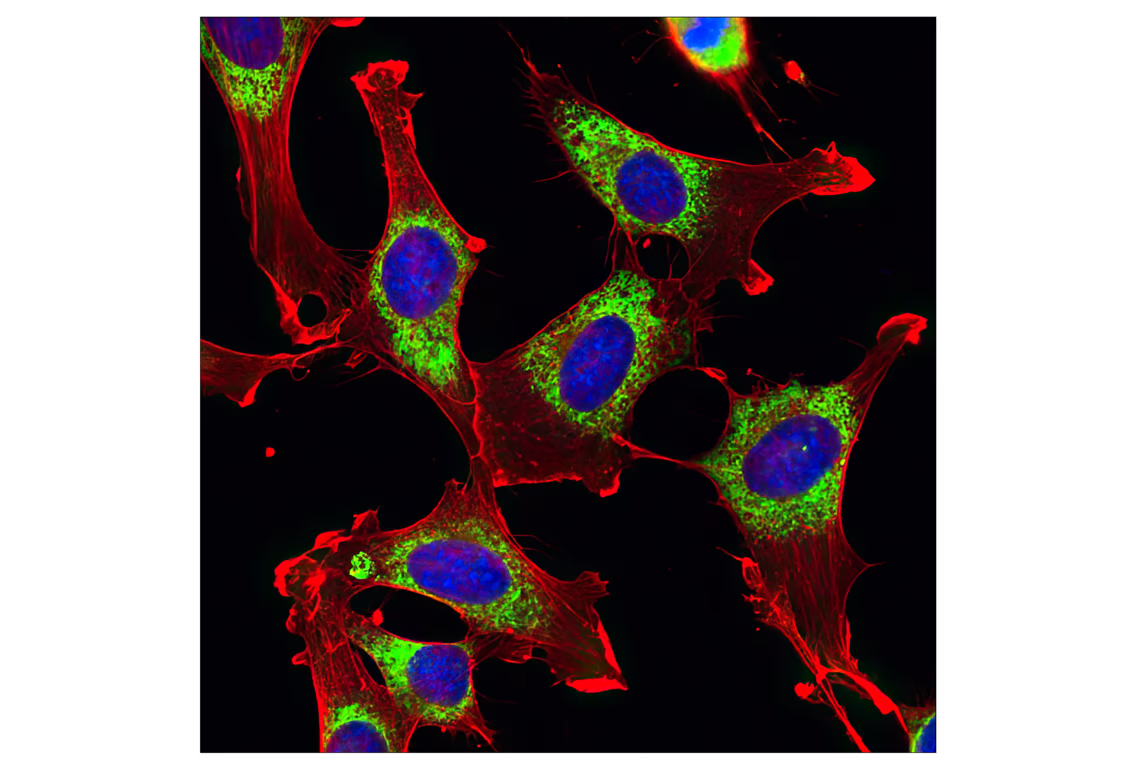




 用小程序,查商品更便捷
用小程序,查商品更便捷




